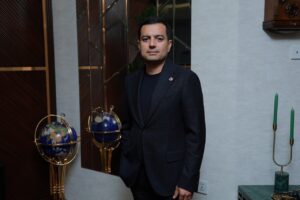We are building Tashkent, not another Dubai
The polycentric model of the city of Tashkent was laid down at the end of the 19th century when the Russian Empire conquered the city. The Russian colonial administration decided to build a new downtown even though there was Chorsu, the original downtown of Tashkent. As a result, currently, we have Old and New Tashkent.
After the powerful earthquake of 1966 when the entire city was destroyed, the new (and last) general layout was prepared. According to this plan in the late 1960s and the 1970s, thousands of new apartment buildings were built in Tashkent while its infrastructure was significantly expanded.
In 1991, when Uzbekistan became independent and switched to a free market economy, the city administration was supposed to prepare a new general layout for Tashkent but it never happened. However, until the 2000s Tashkent was quite a comfortable city with lots of trees and parks, a developed system of irrigation, canals and lakes. The Old City was well-known for picturesque views of fruit trees that were blooming each spring with beautiful aromas. Tashkent residents used to effectively commute by subway, trams, trolleybuses, buses, taxis and private cars.
In 2009, authorities took down 100-year-old trees in the Amir Temur Park. That case was another devastating example of the absence of a new general layout. Some of those trees were personal gifts to the city from prominent figures of the Russian Empire.
Due to the absence of a relevant general layout, infill construction became common practice. Authorities would issue permissions for construction almost anywhere, including green spaces. Low-rise residential development was replaced with high-rise residential development, causing a sharp increase in the density of population by 10 to 20 times. In turn, this led to the overloading of the city’s infrastructure with consequences such as blackouts and shortage of water and natural gas.
In 2010, trolleybuses stopped working in the city. In 2016, tram transportation also ceased to exist after 100 years of being in operation. The number of autobuses also dropped. This «optimization» left passenger cars the sole effective tool for commuting.
Over the past five to six years Uzbekistan has been actively developing thanks to state incentives. The country has opened its economy to international businesses and foreign investments. The growing population and its increased purchase power kicked off demand for new housing and infrastructure such as restaurants and cafés to retail shops and supermarkets. Cars have also become a sign of wealth that drives the appetite for brand-new vehicles. However, these positive economic trends are often accompanied by a deteriorating environment, traffic jams, and massive felling of trees to create more parking lots or to clear sites for new buildings. As a result, Tashkent has already lost the majority of its green resources.
To cope with the growing number of cars the city’s authorities have started to build multilevel road junctions. As there is still no general layout, the administration of the city of Tashkent simply reacts to popping problems, which is a mistake that many big cities all over the world made when they went through “the car age.” Now, they are restoring pedestrian zones and trams. Even though in 2020-2023 the city bought new buses and started to expand the local subway, public transportation in Tashkent is still falling behind the demand.
The power collapse in the winter of 2022-2023 became a high point of this chaotic growth. In the capital city of Uzbekistan with a population of three million residents, people were freezing in their apartments and houses. Some of those who live in high-rise residential complexes even cooked their meals on open fire. The lack of natural gas and electricity also caused significant economic losses and social strain.
In early 2023, President Shavkat Mirziyoyev was on an official visit to Singapore where he met with representatives of Meinhardt, a leading global planning, engineering and project management company. The president invited the company to take part in the preparation of the general layout of New Tashkent, a city within the city that will be built northeast of the current Tashkent. New Tashkent is going to follow the polycentric model. Three key centers of gravity and several local centers will create opportunities for comfortable living and decrease the burden on the transportation system. While working on the concept of the new city, architects kept in mind «the rule of 15-minute accessibility.» In addition, green spaces like parks, mini-parks and alleys will occupy more than 30% of the entire territory in New Tashkent and will be available for all residents. Buildings in New Tashkent will be required to meet green standards of construction with common usage of renewable sources of energy, new energy-efficient technologies and Earth-friendly transportation.
An administrative office responsible for the construction of New Tashkent is very serious when it comes to issues related to energy, infrastructure, mobility of people, environment, social amenities and food security. Unfortunately, we can’t say the same about Old Tashkent, which is currently the main city. The development of new territories is implemented in detachment from the current districts. And of course, sporadic initiatives by different ministries and the city’s administration on infrastructure and public transportation improvement fall short of their goals due to the lack of general layout of the city of Tashkent.
I believe that it is very important to make local architects, who worked with the old general layout of Tashkent, part of the new team responsible for the city’s design. We can’t rely only on foreign specialists. Tashkent has a 2,000-year history of unique city planning and architecture. We are building Tashkent, not another Dubai or Astana. The culture of people living in the city must be taken into account while preparing the design of a building, district or even city as a whole.




